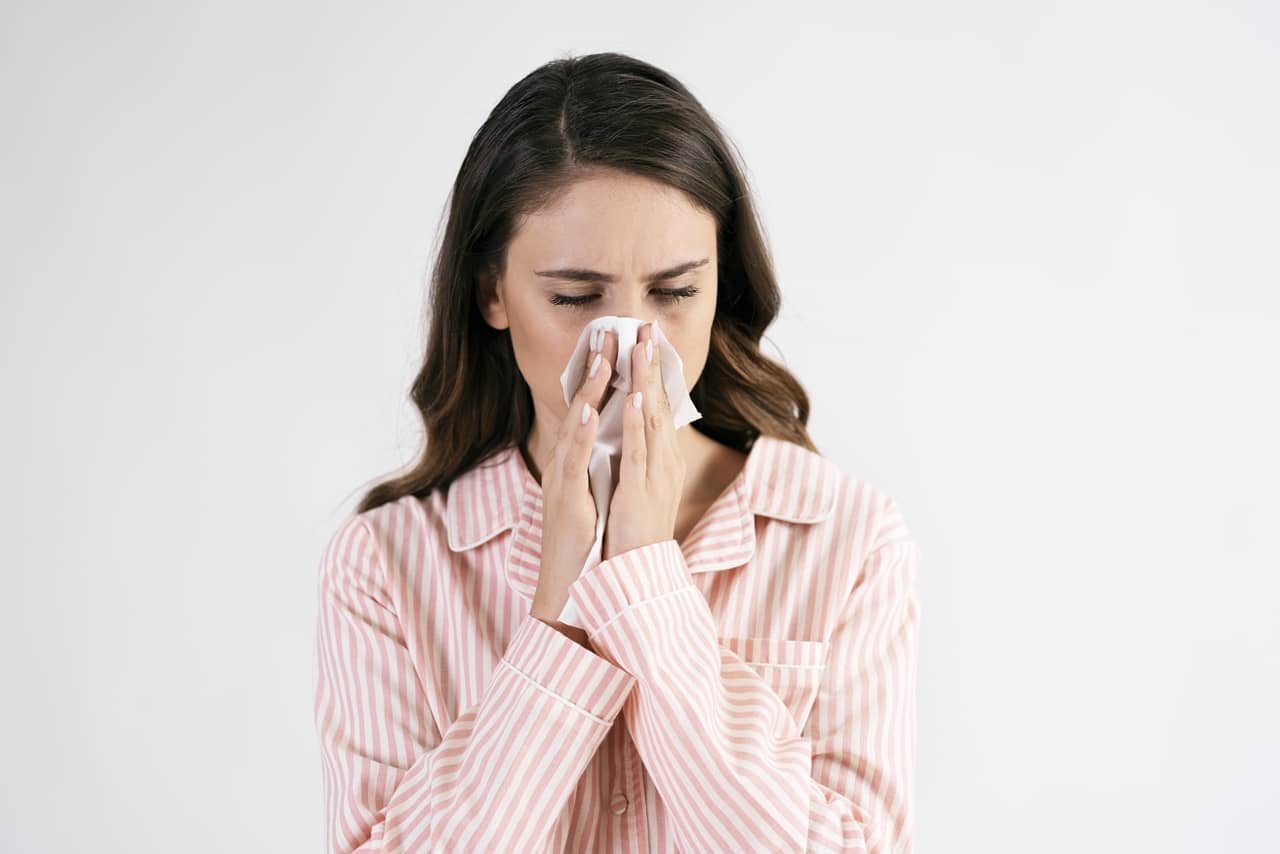When it comes to treating sunburn at home, there are numerous natural remedies and tips that can provide relief and expedite the healing process. One of the most popular remedies is aloe vera. Known for its soothing properties, aloe vera gel can be applied directly to the affected area to reduce redness and inflammation. Its cooling effect can also provide immediate relief from the burning sensation associated with sunburn.
In addition to aloe vera, another effective natural remedy is coconut oil. Rich in antioxidants and fatty acids, coconut oil can moisturize the skin and promote healing. Applying a thin layer of coconut oil to the sunburned area can help prevent peeling and keep the skin hydrated, allowing it to heal more quickly.
Another popular home remedy for sunburn is oatmeal. Oatmeal has anti-inflammatory properties that can soothe irritated skin and reduce redness. To use oatmeal as a remedy, you can make a paste by mixing ground oatmeal with water and applying it to the sunburned area. Leave it on for 15-20 minutes before rinsing off with cool water.
Aside from these natural remedies, there are also practical steps you can take to alleviate the discomfort of sunburn. One of the most important things to do is to stay hydrated. Sunburn can dehydrate the body, so it is crucial to drink plenty of water to replenish lost fluids and prevent further damage to the skin.
Another tip is to take cool showers or baths. This can help lower the temperature of the skin and provide temporary relief from the pain and heat associated with sunburn. Avoid using hot water, as it can further irritate the skin.
Furthermore, it is essential to protect the sunburned area from further sun exposure. This means staying out of the sun and wearing protective clothing, such as long-sleeved shirts and wide-brimmed hats, when going outside. Applying a broad-spectrum sunscreen with a high SPF is also crucial to prevent further damage to the skin.
Overall, treating sunburn at home can be done effectively with natural remedies and practical tips. However, it is important to remember that severe sunburn or sunburn accompanied by symptoms like fever or blistering may require medical attention. If your sunburn does not improve or worsens after a few days, it is best to consult a healthcare professional for proper evaluation and treatment.
1. Cool Compresses and Cold Showers
One of the first things you should do when you notice sunburn is to cool down your skin. Applying cool compresses or taking cold showers can help soothe the burning sensation and reduce inflammation. Be sure to use cool or lukewarm water, as hot water can further irritate the skin. You can also add a few tablespoons of baking soda to your bathwater to help relieve itching and inflammation.
In addition to cool compresses and cold showers, there are several other remedies you can try to alleviate the discomfort and promote healing of sunburned skin. One effective option is to apply aloe vera gel, which has soothing and cooling properties. Simply extract the gel from an aloe vera plant or use a store-bought version and apply it generously to the affected areas. Aloe vera not only helps to hydrate the skin but also contains antioxidants that can aid in reducing inflammation and promoting the healing process.
Another natural remedy that can provide relief is oatmeal. Oats have anti-inflammatory properties and can help soothe itchiness and redness caused by sunburn. To use oatmeal, you can either take an oatmeal bath or make a paste by mixing ground oats with water and applying it directly to the affected areas. Leave it on for about 15 minutes before rinsing off with cool water.
If you’re looking for a quick and easy remedy, you can try using cold milk. Milk contains proteins that can help soothe the skin and reduce inflammation. Simply soak a clean cloth in cold milk and apply it to the sunburned areas for a few minutes. Repeat this process several times a day for maximum relief.
It’s important to keep in mind that while these remedies can provide temporary relief, they may not completely heal the sunburn. It’s crucial to protect your skin from further damage by avoiding direct sunlight, wearing protective clothing, and using sunscreen with a high SPF. If your sunburn is severe or accompanied by symptoms such as fever, chills, or blistering, it’s best to seek medical attention as it may require more intensive treatment.
2. Aloe Vera Gel
Aloe vera is a popular natural remedy for various skin conditions, including sunburn. Its cooling and anti-inflammatory properties can provide instant relief from pain and redness. To use aloe vera gel, simply extract the gel from the plant or use a commercially available gel. Apply a thin layer of the gel to the affected area and let it dry. Repeat this process a few times a day for maximum benefits.
Aloe vera, also known as the “plant of immortality,” has been used for centuries for its medicinal properties. It is a succulent plant that belongs to the Liliaceae family and is native to North Africa. The gel extracted from the leaves of the aloe vera plant is rich in vitamins, minerals, enzymes, and amino acids, making it an excellent natural remedy for various skin conditions.
One of the most common uses of aloe vera gel is for sunburn relief. When applied to the skin, the gel forms a protective layer that helps to soothe and hydrate the damaged skin. Its cooling properties provide instant relief from the burning sensation and reduce redness and inflammation. Additionally, aloe vera gel contains antioxidants that can help to repair damaged skin cells and promote faster healing.
To use aloe vera gel for sunburn, start by extracting the gel from the leaves of the plant. Cut a leaf close to the base and wash it thoroughly to remove any dirt or debris. Then, using a sharp knife, carefully slice open the leaf and scoop out the gel using a spoon. Alternatively, you can also purchase commercially available aloe vera gel from a trusted brand.
Once you have the gel, apply a thin layer to the affected area using clean hands or a cotton ball. Gently massage the gel into the skin until it is fully absorbed. Allow the gel to dry naturally, and avoid touching or rubbing the area to prevent further irritation. For best results, repeat this process two to three times a day until the sunburn symptoms subside.
In addition to providing relief from sunburn, aloe vera gel can also be used for other skin conditions such as dryness, itching, and minor cuts and burns. Its moisturizing properties help to hydrate the skin and prevent dryness, while its antibacterial properties can help to prevent infection in minor wounds.
When using aloe vera gel, it is important to choose a high-quality product that is free from additives and preservatives. Look for gels that are made from 100% pure aloe vera and have been certified by reputable organizations. It is also advisable to do a patch test before applying the gel to a larger area of the skin, especially if you have sensitive skin or are prone to allergies.
In conclusion, aloe vera gel is a versatile and effective natural remedy for sunburn and other skin conditions. Its soothing and healing properties make it a popular choice among those seeking relief from sunburn pain and inflammation. Whether you choose to extract the gel from the plant or use a commercially available product, aloe vera gel can provide the much-needed relief and promote faster healing of sun-damaged skin.
3. Moisturize with Natural Ingredients
Moisturizing the sunburned skin is crucial for preventing dryness and promoting healing. Look for moisturizers that contain natural ingredients such as coconut oil, shea butter, or cocoa butter. These ingredients are known for their hydrating and nourishing properties, which can help soothe the skin and reduce inflammation caused by sunburn.
Coconut oil is a popular choice for moisturizing sunburned skin due to its high content of fatty acids. These fatty acids help to lock in moisture and create a protective barrier on the skin, preventing further damage. Additionally, coconut oil has anti-inflammatory properties that can help reduce redness and swelling.
Shea butter is another excellent natural ingredient for sunburned skin. It is rich in vitamins A and E, which are known for their moisturizing and healing properties. Shea butter also contains antioxidants that can help repair damaged skin cells and promote faster healing.
Cocoa butter is a well-known moisturizer that is often used in skincare products. It is derived from cocoa beans and has a rich, creamy texture that melts into the skin. Cocoa butter is packed with antioxidants, vitamins, and fatty acids that can help nourish and hydrate sunburned skin.
When applying the moisturizer, it is important to be gentle to avoid further irritation. Start by cleansing the affected area with a mild, fragrance-free cleanser and patting it dry with a soft towel. Then, take a small amount of the moisturizer and gently massage it into the sunburned skin using circular motions.
Reapply the moisturizer as needed throughout the day, especially after swimming or sweating, as these activities can further dehydrate the skin. It is also important to drink plenty of water to keep your body hydrated from the inside out.
In addition to moisturizing, it is essential to protect your sunburned skin from further sun exposure. Wear loose-fitting, lightweight clothing that covers the affected areas, and use a broad-spectrum sunscreen with an SPF of 30 or higher. Seek shade whenever possible, especially during the peak hours of sunlight.
By moisturizing your sunburned skin with natural ingredients and taking steps to protect it from further damage, you can help speed up the healing process and alleviate discomfort. Remember to be patient, as sunburns can take several days or even weeks to fully heal. If your sunburn is severe or accompanied by symptoms such as blistering, fever, or dizziness, it is important to seek medical attention.
4. Stay Hydrated
When your skin is sunburned, it is important to stay hydrated from the inside out. Drink plenty of water to prevent dehydration and to help your body heal faster. Additionally, consuming foods with high water content, such as watermelon, cucumbers, and strawberries, can also contribute to your hydration levels.
Sunburn can cause your body to lose water and essential electrolytes, leading to dehydration. This can further exacerbate the symptoms of sunburn, such as dryness, tightness, and discomfort. By drinking an adequate amount of water, you can replenish the lost fluids and support your body’s natural healing process.
Watermelon, in particular, is a great choice for hydration due to its high water content. It is estimated that watermelon consists of about 92% water, making it an excellent source of hydration. Not only does it help quench your thirst, but it also provides essential vitamins and minerals that can aid in skin repair.
Cucumbers are another hydrating food that can provide relief to sunburned skin. With a water content of approximately 96%, cucumbers are incredibly refreshing and can help soothe the skin. They also contain antioxidants and anti-inflammatory compounds that can reduce redness and inflammation caused by sunburn.
Strawberries, known for their delicious taste, are also a fantastic source of hydration. With a water content of around 91%, these juicy berries can help replenish your body’s fluids while providing a dose of vitamin C, which is essential for collagen production and skin repair.
In addition to drinking water and consuming hydrating foods, you can also consider incorporating other beverages into your routine to support hydration. Coconut water, for example, is a natural source of electrolytes and can help restore the body’s balance of fluids. Herbal teas, such as chamomile or green tea, can also provide hydration while offering soothing and antioxidant benefits.
Remember, staying hydrated is crucial not only for your overall health but also for the healing process of sunburned skin. Make sure to drink water throughout the day, especially when spending time outdoors, and incorporate hydrating foods into your diet to support your body’s recovery.
Furthermore, it is crucial to avoid any activities or substances that can exacerbate the irritation and discomfort caused by sunburn. For instance, it is advisable to stay away from chlorinated pools or hot tubs as the chemicals in these water sources can strip the skin of its natural oils and worsen the sunburn. Similarly, it is best to avoid wearing tight or restrictive clothing that can rub against the affected areas and cause further irritation.
In addition to avoiding harsh products and irritants, it is also important to keep the skin moisturized during the healing process. Sunburned skin tends to be dry and dehydrated, so applying a soothing and moisturizing lotion or cream can help alleviate discomfort and prevent peeling. Look for products that contain ingredients like aloe vera, shea butter, or hyaluronic acid, as these can provide hydration and promote skin healing.
Moreover, it is essential to protect the sunburned skin from further damage by practicing sun safety measures. This includes wearing protective clothing, such as wide-brimmed hats and long-sleeved shirts, and using a broad-spectrum sunscreen with a high SPF. Remember to reapply sunscreen every two hours, especially if you are spending time outdoors or engaging in activities that can make you sweat.
Lastly, it is crucial to stay hydrated and drink plenty of water throughout the day. Sunburn can cause dehydration, and adequate hydration is necessary for the body to heal and repair damaged skin cells. Avoid alcohol and caffeinated beverages, as these can dehydrate the body further. Instead, opt for water, herbal teas, or electrolyte-rich drinks to replenish lost fluids.
In conclusion, taking care of sunburned skin involves avoiding harsh products and irritants, keeping the skin moisturized, protecting it from further damage, and maintaining proper hydration. By following these guidelines, you can help speed up the healing process and minimize discomfort caused by sunburn.
6. Take Over-the-Counter Pain Relievers
If the sunburn is causing significant discomfort, you can consider taking over-the-counter pain relievers such as ibuprofen or acetaminophen. These medications can help reduce pain and inflammation. However, always follow the recommended dosage and consult with a healthcare professional if you have any underlying health conditions or concerns.
When it comes to managing the discomfort caused by sunburn, over-the-counter pain relievers can be a valuable option. Ibuprofen and acetaminophen are two commonly available medications that can provide relief from the pain and inflammation associated with sunburn. Ibuprofen is a nonsteroidal anti-inflammatory drug (NSAID) that works by reducing the production of certain chemicals in the body that cause pain and inflammation. Acetaminophen, on the other hand, is a pain reliever that works by blocking certain pain signals in the brain.
Before taking any medication, it is important to carefully read and follow the instructions on the packaging. Each medication has a specific recommended dosage, and exceeding this dosage can lead to adverse effects. It is also crucial to consider any underlying health conditions you may have. Certain medications, including pain relievers, can interact with other medications or exacerbate existing health conditions. Therefore, it is always advisable to consult with a healthcare professional before taking any over-the-counter pain relievers, especially if you have any concerns or pre-existing health conditions.
In addition to pain relief, it is essential to remember that over-the-counter pain relievers do not treat the underlying cause of sunburn. They provide temporary relief from the symptoms but do not speed up the healing process. Therefore, it is crucial to continue practicing proper sunburn care, such as applying soothing lotions, staying hydrated, and avoiding further sun exposure. If the sunburn is severe or accompanied by other concerning symptoms, it is advisable to seek medical attention for further evaluation and treatment.
Overall, over-the-counter pain relievers can be a useful tool in managing the discomfort caused by sunburn. However, it is important to use them responsibly, following the recommended dosage and consulting with a healthcare professional if necessary. Additionally, it is crucial to remember that pain relievers do not cure sunburn and should be used in conjunction with proper sunburn care. By taking these steps, you can help alleviate the pain and inflammation associated with sunburn while promoting the healing process.
7. Wear Loose and Breathable Clothing
While your sunburn is healing, it is important to protect your skin from further irritation. Opt for loose and breathable clothing made from natural fabrics such as cotton. Avoid tight clothing or synthetic materials that can trap heat and exacerbate the discomfort. Additionally, wearing a wide-brimmed hat and sunglasses can provide extra protection for your face and eyes.
When it comes to choosing clothing to wear while your sunburn heals, it’s crucial to prioritize comfort and breathability. Loose-fitting garments made from natural fabrics such as cotton are ideal choices. These materials allow your skin to breathe and prevent further irritation. Cotton, in particular, is highly absorbent and can help draw excess heat away from your sunburned skin, providing relief from the burning sensation.
Avoid wearing tight clothing, as it can rub against your sunburned skin and worsen the discomfort. Tight garments can also restrict airflow, trapping heat and moisture against the affected area, which can impede the healing process. Synthetic materials like polyester or nylon should also be avoided, as they can trap heat and exacerbate the already sensitive and inflamed skin.
In addition to wearing loose and breathable clothing, consider adding a wide-brimmed hat and sunglasses to your sunburn protection arsenal. These accessories provide extra coverage for your face and eyes, shielding them from the sun’s harmful rays. A wide-brimmed hat not only protects your scalp, but it also shades your face, ears, and neck. Sunglasses with UV protection are essential for safeguarding your eyes from the sun’s damaging ultraviolet rays.
Remember, protecting your sunburned skin from further irritation and exposure to the sun is crucial for a speedy recovery. By choosing loose and breathable clothing made from natural fabrics, you can ensure that your skin stays cool and comfortable while it heals. Don’t forget to accessorize with a wide-brimmed hat and sunglasses to provide additional protection for your face and eyes.
8. Apply Cold Milk or Yogurt
Cold milk or yogurt can provide relief from sunburn due to their cooling effect. Soak a clean cloth in cold milk or apply cold yogurt directly to the affected area. Leave it on for a few minutes and then rinse off with cool water. The lactic acid in milk and yogurt can help soothe the skin and promote healing.
In addition to their cooling effect, cold milk and yogurt also offer other benefits for sunburned skin. Milk is rich in vitamins A and D, which can help nourish and repair damaged skin cells. It also contains proteins that can help reduce inflammation and redness. Applying cold milk to your sunburned skin can create a soothing sensation, providing immediate relief.
Yogurt, on the other hand, contains probiotics that can help restore the skin’s natural barrier function. These beneficial bacteria can help strengthen the skin’s defenses and promote healing. The lactic acid in yogurt acts as a gentle exfoliant, removing dead skin cells and promoting the growth of new, healthy skin.
To apply cold milk or yogurt to your sunburned skin, start by ensuring that the affected area is clean and dry. Then, soak a clean cloth in cold milk or scoop out some cold yogurt and apply it directly to the sunburned skin. Gently massage the milk or yogurt into the skin, allowing it to penetrate and provide relief. Leave it on for about 10 minutes, or until it starts to dry, and then rinse off with cool water.
For an extra cooling effect, you can also chill the milk or yogurt before applying it to your skin. Simply place the container in the refrigerator for a few minutes before use. This will enhance the soothing sensation and help reduce inflammation even further.
Remember to be gentle when applying cold milk or yogurt to your sunburned skin, as rubbing too vigorously can cause further irritation. Pat the skin dry after rinsing off the milk or yogurt, and avoid using any harsh soaps or scrubs in the affected area. Instead, opt for mild, fragrance-free cleansers that won’t further irritate the skin.
In conclusion, cold milk and yogurt are not only delicious and nutritious, but they also have remarkable healing properties for sunburned skin. By applying these cooling ingredients to your skin, you can alleviate the discomfort of sunburn and promote the healing process. So next time you find yourself with a sunburn, reach for a carton of milk or a tub of yogurt and let nature’s remedy work its magic.
9. Use Natural Oils
Applying natural oils to your sunburned skin can help moisturize and soothe the affected area. Some oils that are known for their healing properties include lavender oil, chamomile oil, tea tree oil, and many more. These oils have been used for centuries for their medicinal properties and can provide relief from the pain and inflammation caused by sunburn.
Lavender oil, for example, is well-known for its calming and soothing effects. It has anti-inflammatory properties that can reduce redness and swelling. Chamomile oil, on the other hand, is known for its anti-inflammatory and analgesic properties. It can help relieve pain and promote healing. Tea tree oil is a powerful antiseptic and can help prevent infection in sunburned skin.
When using natural oils to treat sunburn, it is important to dilute them in a carrier oil before applying them to the skin. Coconut oil and olive oil are popular choices as carrier oils because they are gentle on the skin and provide additional moisturizing benefits. To dilute the essential oil, mix a few drops of the oil with a tablespoon of carrier oil and gently massage it onto the sunburned skin.
It is important to note that while natural oils can provide relief from sunburn, they should not be used as a substitute for proper sun protection. Prevention is always better than cure when it comes to sunburn, so make sure to wear sunscreen, protective clothing, and seek shade during peak sun hours.
In addition to using natural oils, there are other home remedies that can help alleviate the discomfort of sunburn. Aloe vera gel, for example, is widely known for its soothing and cooling properties. Applying a thin layer of aloe vera gel to the sunburned skin can provide instant relief and promote healing. Cold compresses, oatmeal baths, and drinking plenty of water can also help hydrate the skin and reduce inflammation.
If your sunburn is severe and accompanied by symptoms such as blistering, fever, or extreme pain, it is important to seek medical attention. Severe sunburn can be a sign of sun poisoning, which requires professional medical treatment.
10. Give Your Skin Time to Heal
Lastly, it is important to be patient and give your skin the time it needs to heal. Sunburned skin can take several days or even weeks to fully recover. Avoid further sun exposure until your skin has healed completely. During this time, continue to follow the above remedies and tips to promote healing and prevent any complications.
In addition to giving your skin time to heal, it is crucial to adopt a gentle skincare routine that will aid in the recovery process. Opt for mild cleansers and moisturizers that are free of harsh chemicals and fragrances. These products will help soothe and hydrate your skin, allowing it to heal more effectively.
Furthermore, it is essential to stay hydrated during the healing period. Sunburn draws moisture away from the skin, leading to dryness and potential peeling. By drinking plenty of water and consuming hydrating foods such as watermelon, cucumbers, and oranges, you can replenish lost fluids and support the healing process.
Additionally, consider incorporating natural remedies into your routine to accelerate healing and alleviate discomfort. Aloe vera gel, for example, has soothing properties that can provide relief to sunburned skin. Apply a generous amount of pure aloe vera gel to the affected areas several times a day. You can also try using cold compresses or taking cool baths to reduce inflammation and soothe the burning sensation.
Moreover, it is crucial to protect your skin from further damage during the healing process. Wear loose-fitting, breathable clothing that covers the affected areas when going outdoors. Opt for wide-brimmed hats and sunglasses to shield your face and eyes from the sun’s harmful rays. Additionally, consider using a broad-spectrum sunscreen with a high SPF to prevent any further sunburn.
In conclusion, sunburn can be a painful and uncomfortable condition, but with the right remedies and care, you can help speed up the healing process. Remember to always protect your skin from the sun’s harmful rays by wearing sunscreen, seeking shade, and wearing protective clothing. If your sunburn is severe, accompanied by fever or other concerning symptoms, it is advisable to seek medical attention. Take care of your skin, and enjoy the sun responsibly!
















